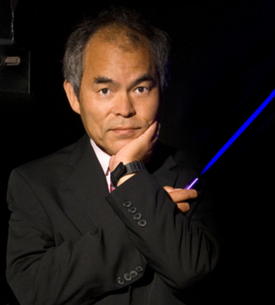- Mechanical
- Posts
- How pickling removes rust and oxides from metal surfaces
How pickling removes rust and oxides from metal surfaces
Mechanical engineering updates, hot jobs, book recommendations, and our Engineer of the Month is...

Welcome, engineers and innovators! The Mechanical newsletter is back with a mix of practical knowledge and groundbreaking discoveries. This month’s spotlight explains how pickling, an acid-based cleaning process, removes impurities from metal surfaces, making them stronger and more corrosion-resistant.
Check out how scientists have developed a game-changing laser purification process that achieves near-perfect silica sand purity. Industry Updates feature exciting developments, from ultra-strong armor materials to the future of quantum computing. Read on to stay ahead of the latest in mechanical engineering!
🚨Aerospace: From commercial spaceflight to deep space exploration, our newsletter propels your aerospace career on the first Friday of every month. Click here to subscribe now.
🔥 Today’s hot jobs as featured on jobs.interestingengineering.com

Did a friend forward this e-mail to you? Subscribe here
INDUSTRY UPDATES
US creates strongest-ever armor material with 100 trillion bonds per cm²
This high flexibility and durable armor is world’s first two-dimensional mechanically interlocked material.Spain’s spherical nuclear reactor achieves first plasma with ‘negative triangularity’
World’s only fusion reactor with ‘negative triangularity’ brings us closer to clean and limitless energy.Miniature robots to navigate blood vessel networks
Five-millimeter robots might deliver drugs or redirect fluid flow within a 3D lumen network resembling real blood vessel structure.
US engineers turn salty seawater into drinking water with new cheap method
This innovation removes costly chemicals in desalination and cuts desalination costs by up to 15 percent.
Forget silicon – DNA might be the future of quantum computing
Researchers found a way to manipulate DNA at the atomic level with electric field gradients to control nitrogen nuclear spins.
SPOTLIGHT
Explainer: The pickling process for cleaning metal surfaces
Pickling is a chemical process used to clean metal surfaces by removing contaminants like rust, oxides, and stains. This method is particularly useful after hot working processes, where metal surfaces develop a discolored oxide layer. Unlike mechanical cleaning methods such as grinding or wire brushing, pickling ensures a more controlled and even removal of impurities.
The process involves immersing metal in an acid solution, typically hydrochloric or sulfuric acid, which reacts with the oxide layer and dissolves it. The metal is then rinsed thoroughly to remove residual acid, neutralized with an alkaline solution, and dried before further processing. Some metals, like cast iron and corrosion-resistant steels, require specialized acids such as phosphoric, nitric, or hydrofluoric acid for effective pickling.
Pickling is widely used in industries handling ferrous metals, copper, aluminum alloys, and even jewelry. The method enhances metal durability, improves corrosion resistance, and results in a smooth, clean surface ideal for coating or further fabrication. It is particularly essential in manufacturing processes where precise surface preparation is necessary.
Hydrochloric acid is the preferred choice for modern steel pickling due to its efficiency and ability to work at room temperature. However, sulfuric acid remains a cost-effective option, allowing for temperature-controlled pickling and easier acid recovery. Despite its advantages, pickling comes with limitations, such as hazardous waste disposal challenges and the risk of hydrogen embrittlement, which can weaken the metal over time.
The process is straightforward but requires careful handling due to the use of strong acids. Proper disposal of pickling sludge, which contains metal residues, is crucial as it is classified as hazardous waste. However, some of the waste materials can be recycled for other industrial applications, such as steel sintering.
Pickling remains a widely used surface treatment method in manufacturing, offering a reliable way to clean and prepare metal surfaces for further processing while balancing efficiency, cost, and environmental considerations.
MechTech Innovations
Laser Process Achieves 99.99% Purity in Silica Sand
Researchers from the University of California-Davis and materials company Homerun Resources have developed a groundbreaking one-step process using femtosecond lasers to purify raw silica sand to over 99.99% purity. This innovative method eliminates the need for chemical treatments, making it a more sustainable and efficient alternative to traditional purification techniques.
Silica sand is a critical material in electronics manufacturing, used in everything from semiconductors to photovoltaic cells. Conventional purification methods rely on chemical leaching, which can be time-consuming and environmentally harmful. Seeking a greener alternative, the research team, led by Professor Subhash Risbud and doctoral student Arish Naim, tested various heating techniques before discovering that laser pulses delivered under specific conditions could effectively remove impurities.
By sealing raw silica sand in a vacuum and treating it with laser pulses for precise time durations, the team achieved an unprecedented level of purification. The process also induced a phase transition from quartz to cristobalite, revealing new structural properties with potential applications in mechanical engineering.
The researchers now aim to scale this process for industrial applications, with a focus on producing high-purity silicon carbide, a material critical for next-generation batteries and semiconductor technology. This breakthrough could lead to a fully green, carbon-neutral purification cycle that benefits both the mining and clean energy industries.
 | Engineer of the Month 1954 - PresentShuji Nakamura Electrical Engineer | Inventor |
Shuji Nakamura, born on May 22, 1954, in Ehime, Japan, is a Japanese-American electronic engineer renowned for inventing the blue light-emitting diode (LED), a breakthrough that revolutionized energy-efficient lighting. After earning engineering degrees from the University of Tokushima, he developed the first high-brightness gallium nitride (GaN) LED at Nichia Corporation in 1993. His work laid the foundation for modern white LED lighting, optical storage, and display technologies. In 2014, he received the Nobel Prize in Physics. Now a professor at UCSB, Nakamura continues to advance semiconductor research, including laser technology and fusion energy. | |
BOOK RECOMMENDATIONS
Tribo-Electrostatics: Fundamentals, Challenges, and Perspectives by Lucian Dascalescu and Mihai Lungu
This book explores the principles of tribo-electrostatics, explaining its fundamental concepts, current challenges, and future perspectives. It's a valuable resource for engineers interested in the applications of electrostatics in material science and industrial processes.
Wicked Problems: How to Engineer a Better World by Guru Madhavan
This book addresses complex engineering challenges, offering strategies to tackle issues that are difficult to define and inherently unsolvable. A thought-provoking read for engineers aiming to make a positive impact on global issues.
Advanced Aerospace Materials: Aluminum-Based and Composite Structures by Haim Abramovich
This book provides an overview of aerospace materials and their application in the design and manufacturing of aircraft and spacecraft. It covers aspects such as design, failure, and monitoring of structural components.
Principles of Forensic Engineering Applied to Industrial Accidents by Luca Fiorentini and Luca Marmo
This book discusses forensic engineering as an investigative process to discover the causes of industrial accidents. It provides numerous real-life case studies illustrating forensic engineering methods.
The Things We Make by Bill Hammack
Authored by the renowned "engineerguy" from YouTube, this book offers in-depth looks at the engineering behind everyday items and ancient marvels, making complex concepts accessible and engaging.
Additional Reads
🚨 The Blueprint: IE's daily engineering, science & tech bulletin.
⚙️ Mechanical:Explore the wonders of mechanical engineering.
🛩️ Aerospace: The latest on propulsion, satellites, aeronautics, and more.
🧠 AI Logs: Insights into the intricacies and developments within the realm of artificial intelligence.
🎬 IE Originals:Weekly round-up of our best science, tech & engineering videos.
🟩 Sustainability: Uncover green innovations and the latest trends shaping a sustainable future for the tech industry.
⚡Electrical: From AI to smart grids, our newsletter energizes you on emerging tech.
🎓 IE Academy: Master your field and take your career to the next level with IE Academy
Want to share your feedback? [email protected]










